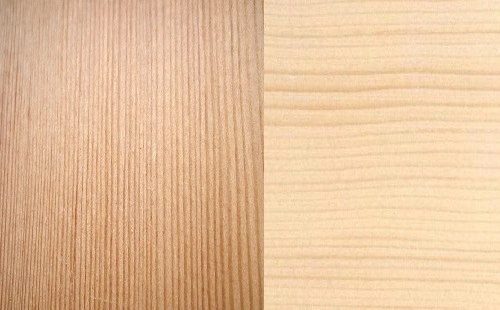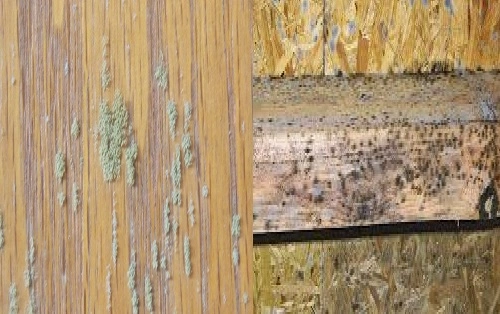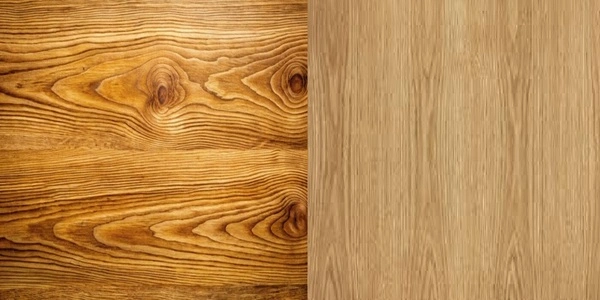When it comes to selecting wood for construction, furniture, or home improvement projects, Douglas Fir and Spruce Fir are two commonly chosen options in the USA. Both woods belong to the softwood family, offering strength, versatility, and affordability. However, they differ in appearance, durability, and ideal applications, making each more suitable for specific purposes.
In this article, we’ll compare Douglas Fir and Spruce Fir in terms of characteristics, durability, workability, cost, and common uses to help you determine which wood is the best choice for your next project.
Overview of Douglas Fir
Douglas Fir is one of the most widely used softwoods in North America. Despite being classified as a softwood, Douglas Fir is remarkably strong and durable, making it a popular choice for both structural and decorative applications.
Key Characteristics of Douglas Fir:
- Color: Reddish-brown to yellowish, with a straight, uniform grain and prominent growth rings.
- Texture: Medium to coarse texture with moderate luster.
- Density: Dense and heavy for a softwood, offering high strength.
- Durability: Naturally resistant to rot, insects, and wear, making it suitable for structural use and exterior applications.
Overview of Spruce Fir
Spruce Fir, often referring to Sitka Spruce or other common spruce varieties, is another softwood widely used for construction and woodworking. It is lighter and less dense than Douglas Fir but remains a strong and versatile option.
Key Characteristics of Spruce Fir:
- Color: Pale white to light yellow with subtle grain patterns and fewer knots.
- Texture: Fine and even texture, offering a clean, smooth finish.
- Density: Lighter and less dense than Douglas Fir, making it easier to work with.
- Durability: Moderately resistant to decay and less durable in outdoor conditions compared to Douglas Fir.
Douglas Fir vs. Spruce Fir: A Detailed Comparison
| Feature | Douglas Fir | Spruce Fir |
|---|---|---|
| Color and Appearance | Reddish-brown with prominent grain | Pale white to light yellow; fine grain |
| Strength | High strength and load-bearing capacity | Moderate strength; lighter density |
| Durability | Naturally resistant to decay and insects | Moderately resistant to decay |
| Workability | Dense but workable; holds nails well | Easy to cut, sand, and finish |
| Weight | Heavier and denser | Lightweight |
| Cost | Slightly more expensive | More affordable |
| Common Uses | Construction, beams, furniture, flooring | Interior framing, furniture, paneling |
| Outdoor Suitability | Suitable for outdoor projects with treatment | Less durable outdoors; for interior use |
1. Strength and Durability
- Douglas Fir:
Douglas Fir is known for its exceptional strength and durability. It has a high load-bearing capacity, making it ideal for structural applications like beams, joists, and framing. Its density and natural resistance to decay and insects also make it a great option for exterior projects, such as decks and outdoor furniture. - Spruce Fir:
Spruce Fir is lighter and less dense than Douglas Fir. While it offers moderate strength, it cannot handle the same structural loads as Douglas Fir. Spruce is also less resistant to rot and insect damage, making it better suited for interior projects.
Winner: Douglas Fir
Douglas Fir outperforms Spruce Fir in terms of durability and strength, especially for load-bearing or outdoor applications.
2. Appearance and Aesthetic Appeal
- Douglas Fir:
Douglas Fir has a rich, reddish-brown hue with prominent grain patterns and growth rings. This makes it an attractive choice for exposed beams, flooring, or furniture where the wood’s natural beauty is highlighted. - Spruce Fir:
Spruce Fir is lighter in color, ranging from pale white to light yellow, with a more subtle and even grain. Its clean and smooth finish makes it an excellent choice for interior paneling, furniture, and projects requiring a neutral or minimalist appearance.
Winner: It Depends
Choose Douglas Fir for a rustic, bold appearance and Spruce Fir for a lighter, clean aesthetic.
3. Workability
- Douglas Fir:
Douglas Fir is denser and heavier, which can make it more challenging to work with hand tools. However, it holds nails and screws well and finishes beautifully with stains or sealants. It is ideal for experienced woodworkers handling more demanding projects. - Spruce Fir:
Spruce Fir is lightweight and easy to work with. It cuts, sands, and finishes smoothly, making it a great choice for DIY projects, interior paneling, and fine furniture. Its even grain structure allows for clean, precise work.
Winner: Spruce Fir
Spruce Fir is easier to handle for beginners and intricate woodworking projects.
4. Cost and Availability
- Douglas Fir:
Douglas Fir is slightly more expensive than Spruce Fir due to its superior strength, durability, and versatility. However, its long lifespan and durability often make it worth the investment for structural and outdoor projects. - Spruce Fir:
Spruce Fir is typically more affordable and widely available, making it a popular choice for budget-friendly projects and interior applications.
Winner: Spruce Fir
If cost is a primary concern, Spruce Fir offers a more budget-friendly option.
5. Common Uses
- Douglas Fir:
- Structural beams, joists, and framing
- Flooring and exposed interior beams
- Outdoor furniture, decks, and siding (with proper treatment)
- High-strength furniture pieces
- Spruce Fir:
- Interior framing and paneling
- Lightweight furniture and cabinetry
- Musical instruments (e.g., soundboards for guitars and pianos)
- Decorative trims and molding
Which Should You Choose?
- Choose Douglas Fir If:
- You need a strong, durable wood for structural or outdoor applications.
- You prefer a bold, natural grain for flooring, beams, or furniture.
- You’re looking for long-term performance and resistance to decay.
- Choose Spruce Fir If:
- You need a lightweight, affordable wood for interior projects or furniture.
- You value a smooth, clean finish for paneling or decorative work.
- You’re working on a DIY project that requires easy handling and workability.
Conclusion
Both Douglas Fir and Spruce Fir offer unique strengths that make them excellent choices for specific projects. Douglas Fir stands out for its strength, durability, and suitability for outdoor or structural applications, while Spruce Fir is valued for its light weight, workability, and affordability, especially for interior and decorative uses.
By understanding their differences and matching their characteristics to your project’s needs, you can select the right wood that delivers both performance and aesthetic appeal for your home or workspace. Whether you’re building a deck, framing a structure, or crafting furniture, both Douglas Fir and Spruce Fir have their rightful place in the world of woodworking.


